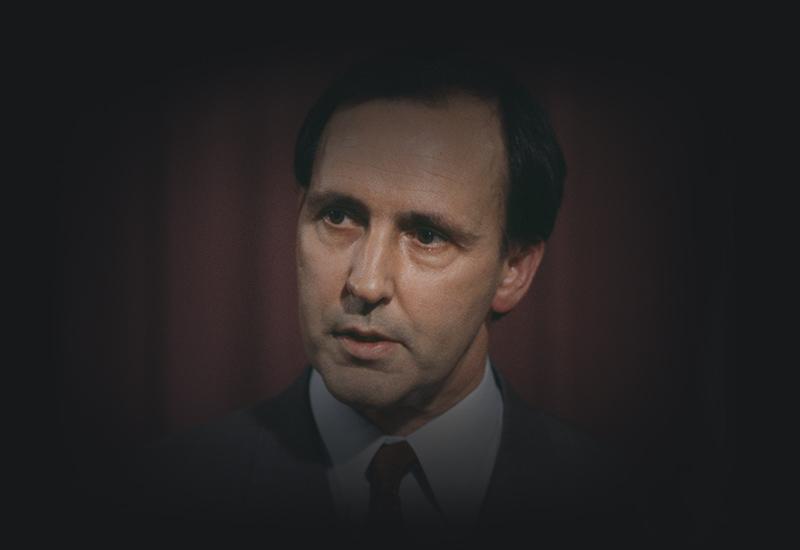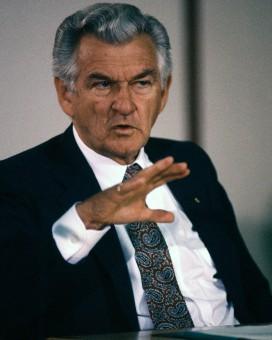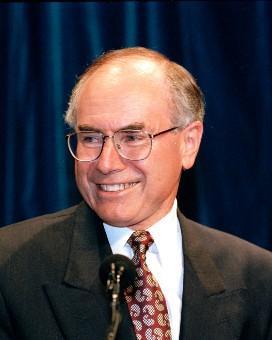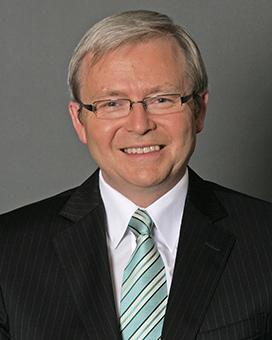Paul John Keating won the seat of Blaxland, the electoral division for his home at Bankstown on 25 October 1969. He held this seat through the next 11 general elections, until his resignation from parliament on 23 April 1996.
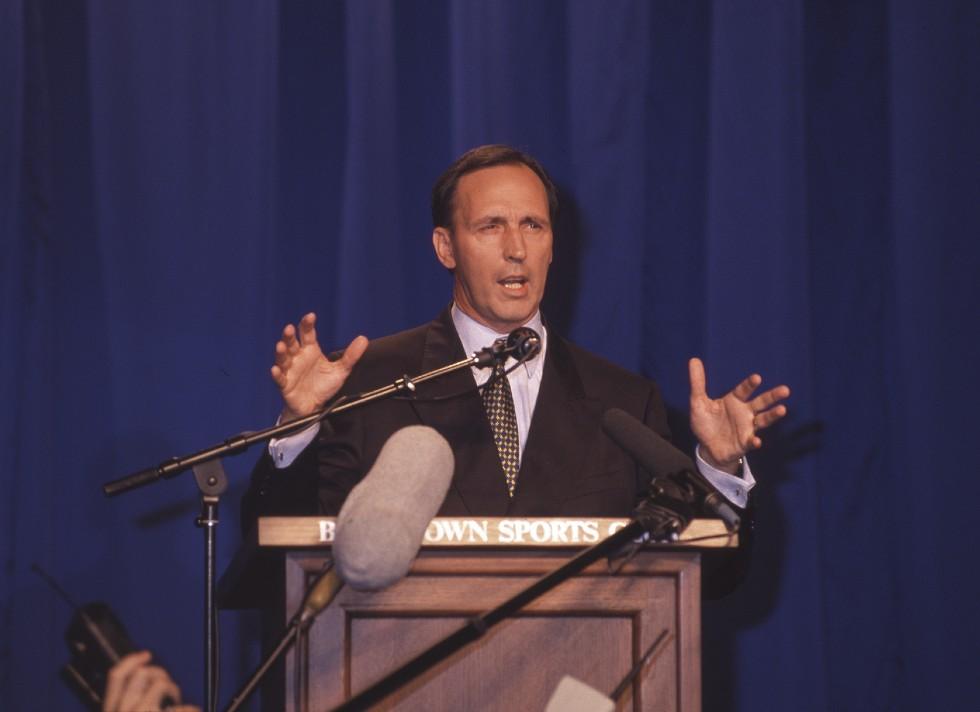
Paul Keating giving the election night speech after Labor's election win in 1993. NAA: A6135, K19/3/93/44
25 October 1969
The government of John Gorton was returned at this House of Representatives election, but with increased dependence on its coalition partner. The Liberal Party won 46 seats and the Country Party 20, with Labor increasing its seats to 59. Among the new Labor members was Paul Keating, who won the seat of Blaxland. The Democratic Labor Party and Australia Party also contested this election, but without success.
2 December 1972
Campaigning on the theme, ‘It’s time’, Gough Whitlam led the Labor Party to victory after 23 years of Liberal–Country Party government. Keating retained Blaxland, and Labor gained a majority of 9 in the House of Representatives, winning 67 seats in the House of Representatives to the Liberal Party’s 38 and the Country Party’s 20. In the Senate, the coalition had a majority, with 21 Liberal Party and 5 Country Party senators, 26 Labor, 5 Democratic Labor Party senators and 3 Independents.
18 May 1974
At this double dissolution election the Labor Party remained in government with 66 House of Representatives seats, including Keating’s Blaxland electorate, to 40 Liberal Party and 21 Country Party seats. In the new Senate, Labor held 29 seats, to 23 Liberal Party and 6 Country Party seats. The balance of power was held by Independent Brian Harradine and South Australian Senator Steele Hall, representing the Liberal Movement.
13 December 1975
This double dissolution election was held after Governor-General Sir John Kerr dismissed the Labor government and commissioned Malcolm Fraser as Prime Minister. The coalition government of Malcolm Fraser and Doug Anthony was elected with a resounding majority. The Liberal Party won 68 seats to Labor’s 36, with the National Country Party (formerly the Country Party) winning 23 seats. Paul Keating held his seat of Blaxland for Labor. At the 1975 double dissolution election, 64 Senate seats were contested, after 2 Senate seats each were created for the Northern Territory and the Australian Capital Territory. In the Senate, there were 27 Labor senators, 27 Liberal and 7 National Country Party senators, 1 Independent and 1 each from the Liberal Movement and the Northern Territory Country Liberal Party.
10 December 1977
The coalition government of Malcolm Fraser and Doug Anthony maintained its strong majority in the House of Representatives. The Liberal Party won 67 seats to Labor’s 38. The National Country Party won 19 seats. Paul Keating retained Blaxland for Labor. In the Senate, the government improved its position slightly, winning 16 seats to Labor’s 14, with the National Party and the Northern Territory Country Liberal Party winning 1 seat each. The Australian Democrats entered parliament for the first time, winning 2 Senate seats.
18 October 1980
The coalition government remained in office, though Liberal Party House of Representatives seats decreased to 54, with the National Country Party winning 20 seats. Labor increased to 51 seats, one of which was the seat of Wills won by Bob Hawke. Keating was returned for Blaxland. In the Senate, the government won 12 seats, the Labor Party 15, the National Party 2, Country Liberal Party 1 and 1 Independent. The Australian Democrats increased their seats to 3.
5 March 1983
This was the fifth double dissolution federal election, and the third in 9 years. Labor leader Bob Hawke gained government in a landslide win, with 75 seats in the House of Representatives to the Liberal Party’s 33 and the National Party’s 17 seats. Labor also increased its Senate seats to 30. The Liberal Party won 23 seats, the National Party 4, the Country Liberal Party 1 and 1 Independent. The Australian Democrats won 5 Senate seats. Malcolm Fraser held his House of Representatives seat of Wannon with a comfortable majority, but resigned from parliament on 31 March after resigning the Liberal leadership 3 weeks earlier. Keating held Blaxland for Labor with a comfortable margin.
1 December 1984
The Hawke government called an early election, partly to merge the elections for each House again and avoid having separate elections the same year. In the enlarged House of Representatives, the Labor Party won 82 seats, the Liberal Party 45 and the National Party 21. Keating won Blaxland for the 8th successive election. In the Senate, Labor won 20 seats, the Liberal Party 16, the National Party 3 and the Northern Territory Country Liberal Party 1. The Australian Democrats won 5 seats and the Nuclear Disarmament Party won 1.
11 July 1987
The election was held after Prime Minister Bob Hawke obtained a double dissolution of parliament. The Labor Party increased its majority in the House of Representatives with 86 seats to 43 Liberal and 19 National Party seats. Blaxland remained firmly in Keating’s hold. In the Senate, Labor won 32 seats, the Liberal Party 27, the National Party 6, the Northern Territory Country Liberal Party 1 and the Australian Democrats 7. The Nuclear Disarmament Party, the Vallentine Peace Group and the Brian Harradine Group each returned 1 senator.
24 March 1990
The Labor government was returned with 78 seats, including Blaxland, Keating’s seat. The Liberal Party increased its strength in the House of Representatives, gaining 55 seats, the National Party 14, and there was 1 Independent. In the Senate, Labor won 15 seats, the Liberal Party 16 seats and the National Party 2, with 1 Northern Territory Country Liberal Party senator. The Australian Democrats won 5 seats and the Western Australia Greens 1.
13 March 1993
Keating had replaced Bob Hawke as leader of the Labor Party in 1991, and led the Labor government to an improved position with 80 seats in the House of Representatives, to the Liberal Party’s 49 and the National Party’s 16 seats and 2 Independents. In the Senate, Labor won 17 seats, the Liberal Party 15 and the National Party 3, with 1 Northern Territory Country Liberal Party senator. The Australian Democrats won 2 seats, and the Western Australia Greens and the Brian Harradine Group each had 1 Senator.
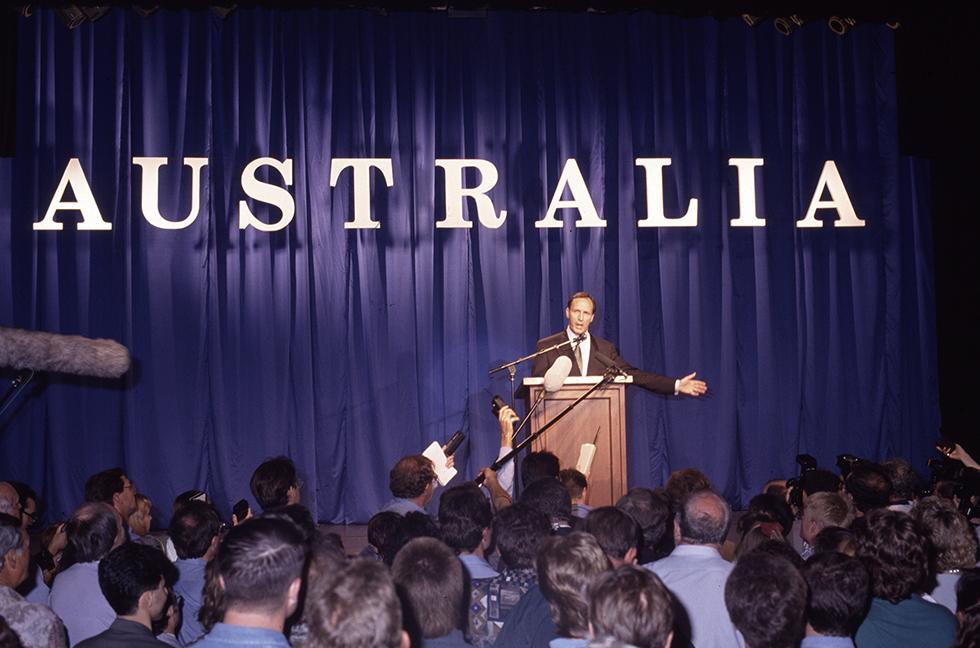
Paul Keating delivers the election night speech at Bankstown Sports Club after Labor's election win in 1993, the 'sweetest victory of all'. NAA: A6135, K19/3/93/40
2 March 1996
John Howard led the Liberal Party in a landslide win with 75 House of Representatives seats. Labor won 49 seats, the National Party 19, and there were 5 seats held by Independents. This was Keating’s last election, as he resigned his seat on 23 April 1996. In the Senate, Labor won 14 seats, the Liberal Party won 17 seats and the National Party 2, with 1 Northern Territory Country Liberal Party Senator. The Australian Democrats won 5 seats and the Tasmanian Greens 1.
Sources
These brief election results relate only to this Prime Minister. They are drawn from the online sources below, where further information can be found.
Australian Electoral Commission: Election results
University of Western Australia: Australian Government and Politics Database

